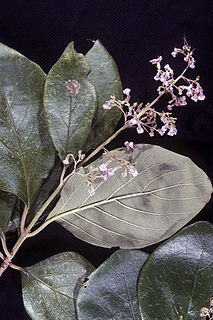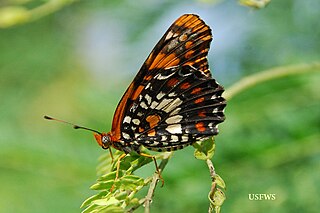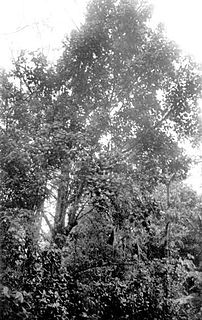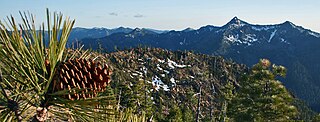
The geography of Puerto Rico consists of an archipelago located between the Caribbean Sea and the North Atlantic Ocean, east of the Dominican Republic and west of the Virgin Islands. The main island of Puerto Rico is the smallest and most eastern of the Greater Antilles. With an area of 3,515 square miles (9,104 km2), it is the third largest island in the United States and the 82nd largest island in the world. Various smaller islands and cays, including Vieques, Culebra, Mona, Desecheo, and Caja de Muertos comprise the remainder of the archipelago with only Culebra and Vieques being inhabited year-round. Mona is uninhabited through large parts of the year except for employees of the Puerto Rico Department of Natural Resources.

Dr. Agustín Stahl was a Puerto Rican medical doctor and scientist with diverse interests in the fields of ethnology, botany, and zoology. He advocated Puerto Rico's independence from Spain.
Cyathea brooksii is a species of tree fern native to Cuba, Hispaniola and Puerto Rico, where it grows on serpentine soils in shaded ravines, along streams, and on forested slopese at an altitude of 250–950 m. The trunk is prostrate and only about 6 cm in diameter. Fronds are pinnate or bipinnate and up to 2 m long. The base of the rachis is covered with blackish scales that have a paler margin. Sori occur in two rows, one along each side of the pinnule midvein.

Brunfelsia is a genus of flowering plants in the family Solanaceae, the nightshades. There are about 50 species described. Linnaeus named the genus for the early German herbalist Otto Brunfels (1488–1534). Common names for the genus include raintree.

The San Juan Botanical Garden, also known as the Botanical Garden of the University of Puerto Rico, is located in the Caribbean city of San Juan, capital of Puerto Rico. This lush 300-acre (1.2 km2) “urban garden” of native and exotic flora serves as a laboratory for the study, conservation and enrichment of plants, trees, flowers, grasses and many other plants. Seventy-five acres are landscaped and open to the general public as well as researchers.

Brunfelsia portoricensis, the Puerto Rico raintree, is a species of flowering plant in the family Solanaceae. It is endemic to Puerto Rico, where it occurs in El Yunque National Forest.
Xylosma pachyphyllum, commonly known as spiny logwood, is a species of flowering plant in the willow family, Salicaceae, that is endemic to Puerto Rico. It can be found in forests on the island's western mountains, where it grows in serpentine soils. It is threatened by habitat loss.

Brunfelsia pauciflora is a species of flowering plant in the family Solanaceae, the nightshades. It is endemic to Brazil, and it is grown in cultivation. Its common names include yesterday-today-and-tomorrow, morning-noon-and-night, Kiss Me Quick, and Brazil raintree.
Aristida portoricensis is a rare species of grass known by the common name pelos del diablo. It is endemic to Puerto Rico, where it is known from two locations, one in a residential area of Mayagüez and one in the Sierra Bermeja. Two other known sites have been extirpated by development of the habitat. It is a federally listed endangered species of the United States.

Cornutia obovata is a rare species of tree in the mint family, and formerly considered a member of the verbena family. It is endemic to forested slopes in Puerto Rico, where its common names are capá jigüerilla, nigua, and palo de nigua. When it was added to the endangered species list of the United States in 1988 there were only seven individuals known to remain in the wild. By 1998 there were eight plants known. This is considered one population divided amongst a few locations in the mountain forests of the island.
Cranichis ricartii is a rare species of orchid known by the common name Puerto Rico helmet orchid. It is native to Puerto Rico, where it is known from three locations in one forest. The plant has also been seen in Guadeloupe. The plant's rarity is the main reason for its listing as an endangered species of the United States.
Gesneria pauciflora is a rare species of flowering plant in the family Gesneriaceae known by the common name yerba maricao de cueva. It is endemic to Puerto Rico, where there are only three populations remaining. It was federally listed as a threatened species of the United States in 1995.
Calyptranthes peduncularis is a species of flowering plant in the myrtle family known by the common names Maricao lidflower and serpentine lidflower. It is endemic to Puerto Rico, where it grows on serpentine soils at 300 to 400 meters in altitude, to a height of between 1.5 and 2 meters. There are perhaps 200 to 300 individuals left. Besides this, "there is nearly no information in the literature about this species."

Brunfelsia grandiflora is a flowering shrub in the nightshade family. It is native to South America. In English is known by the common names royal purple brunfelsia, kiss-me-quick, and yesterday-today-and-tomorrow. In Peru it is known by the Spanish-Quechua name chiricsanango.

Atlantea tulita is a rare species of butterfly known by the common name Puerto Rico harlequin butterfly. This brush-footed butterfly is endemic to Puerto Rico. It is a candidate for United States federal protection as an endangered species. In 2011 a report found federal protection to be warranted, but it was precluded by other actions and it remains a candidate.

Magnolia portoricensis is a tree of the Caribbean region. Its vernacular names include jagüilla and Puerto Rico magnolia. It is native to Puerto Rico and it is found in the Toro Negro State Forest. It is an endangered tree and endemic to Puerto Rico. It is a dicot and apart of the Magnoliaceae family. It is an uncommon tree, found primarily in the central and western mountains at 500 to 925 m above sea level.
B. densifolia may refer to:
Lineodes gracilalis is a moth in the family Crambidae. It was described by Gottlieb August Wilhelm Herrich-Schäffer in 1871. It is found in Cuba and Puerto Rico.
B. portoricensis may refer to:















